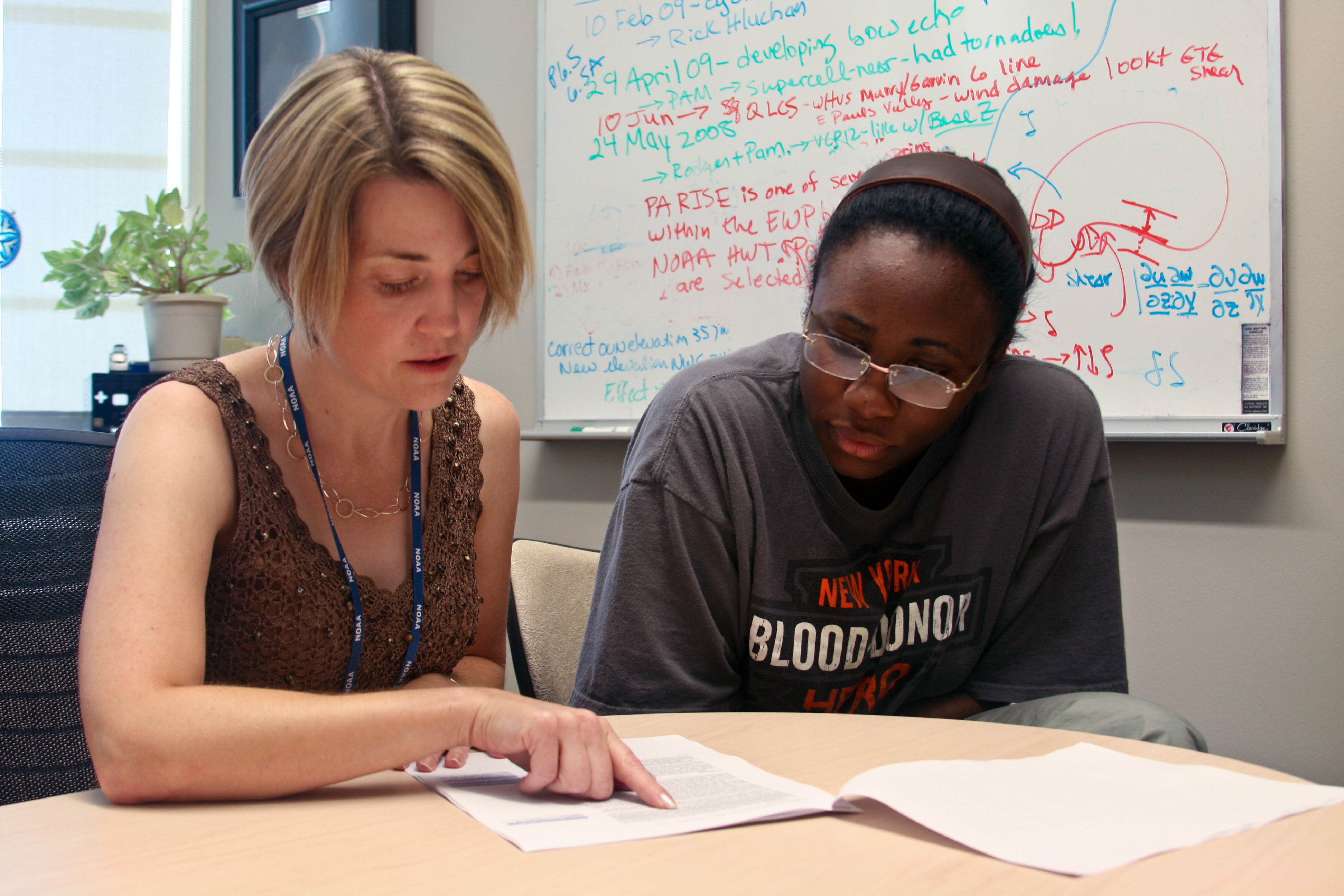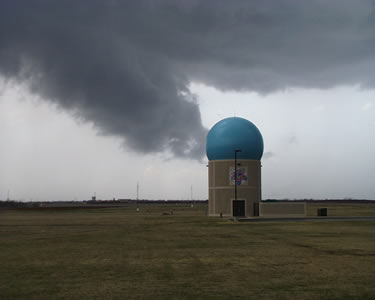 NSSL scientist Pamela Heinselman recently transitioned from our Radar Research Development Division to the Forecast Research Development Division, marking a significant shift in her area of focus. Heinselman has been a research scientist with the Lab since March 2009 and received a Presidential Early Career Award for Science and Engineering in 2009 as well. Previously, she was a collaborator with OU’s Cooperative Institute for Mesoscale Meteorological Studies, where her efforts centered on developing phased array radar through experiments in NOAA’s Hazardous Weather Testbed.
NSSL scientist Pamela Heinselman recently transitioned from our Radar Research Development Division to the Forecast Research Development Division, marking a significant shift in her area of focus. Heinselman has been a research scientist with the Lab since March 2009 and received a Presidential Early Career Award for Science and Engineering in 2009 as well. Previously, she was a collaborator with OU’s Cooperative Institute for Mesoscale Meteorological Studies, where her efforts centered on developing phased array radar through experiments in NOAA’s Hazardous Weather Testbed.
While radar research has long been her passion, Heinselman was ready for a new challenge. For many years, her research concentrated on warning and forecast applications of weather radars. Now, she is applying that experience to develop Warn on Forecast, a program aiming to increase tornado, severe thunderstorm, and flash flood warning lead times.
We sat down with her to get her take on how radar and forecasting work together at NSSL.
Q: What inspired you to make the switch to the Warn-on-Forecast group? What do you hope to accomplish in this new role?
A: What inspired me was the opportunity to engage in new challenges, to be immersed in and learn more about this exciting research area, and to contribute to the success of the Warn-on-Forecast program through my skills and experience.
What I hope to accomplish is to work with our in-house scientists and OAR labs and National Weather Service partners at National Centers and local offices to advance and eventually transfer to operations a cutting-edge forecast system that ultimately improves the ability of individuals, families, and communities to protect their lives and property.
Q: How is your position in FRDD related to your work with radar?
A: My position in FRDD is related to my work with radar in several ways. Most importantly, like Phased Array Radar, the Warn-on-Forecast system under development is cutting-edge technology. While Phased Array Radar is introducing adaptive rapid-radar scanning as a potential replacement for the WSR-88D, Warn-on-Forecast is introducing frequently updating, probabilistic high-impact weather forecast guidance as an integral part of a forecasting paradigm shift, known as Forecasting a Continuum of Environmental Threats (FACETS). Another connection is the Warn-on-Forecast program’s exploration of benefits from assimilating legacy and rapid-scan dual-polarization radar data in these model forecasts.
Q: In your Phased Array Radar Innovative Sensing Experiment, you used eye tracking technology to analyze forecaster decision-making. How will the results of this research be useful in developing Warn-on-Forecast?
A: The results of the eye tracking experiment will shed light on forecaster cognitive processes that will aid the development of forecast visualization techniques optimized for the needs of operational forecasters. Additionally, since currently forecasts rely heavily on radar data in their warning decision process, results of the experiment will help to bridge the use of weather radar data with the use of probabilistic forecast guidance in operations.
Q: What do you see as the biggest challenges and opportunities for radar and forecasting research?
A: One of the biggest challenges for radar and forecasting research is finding creative solutions to known technological issues, such as matching co-polar radar cross-sections, reducing model error, and attaining the computational resources needed for forecasting systems with 1-km or smaller grid spacing.
At the same time, one of the biggest opportunities for radar and forecasting research is to revolutionize the frequency and specificity of high-impact weather observations and forecasts to ultimately provide decision makers with more timely guidance that improves their ability to take protective action well in advance of life-threatening events.
Q: How will Warn-on-Forecast address the need for greater lead time and more accurate weather forecasts?
A: Warn-on-Forecast will address the need for greater lead time and more accurate weather forecasts by producing frequently updated, well-calibrated probabilistic 0 to 6 hour convective-scale analyses and forecast guidance that support high-impact forecast and warning operations within NOAA.



